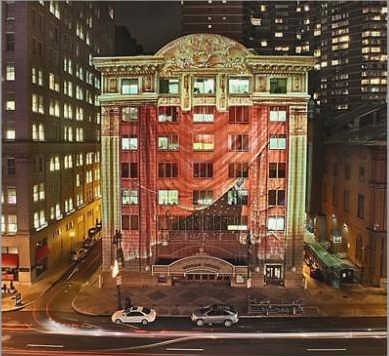Calgary non-statutory Center City illumination design guidelines

Merriam Theater, Philadelphia. Philadelphia Inquirer photo by David M. Warren. Architectural lighting project, Holidays 2007, by Center City District BID, with Lightiing Practice, Artlumiere, Phillips Lighting, and Vitetta.
For architectural lighting and other illumination questions: CENTRE CITY ILLUMINATION GUIDELINES: Illumination Solutions within the Context of the Centre City Plan
Interestingly, they use a framework based on the concepts expressed by Kevin Lynch in Image of the City, a study of how people make sense of their community, and what Lynch calls "legibility." According to Wikipedia:
Lynch reported that users understood their surroundings in consistent and predictable ways, forming mental maps with five elements:
• paths, the streets, sidewalks, trails, and other channels in which people travel;
• edges, perceived boundaries such as walls, buildings, and shorelines;
• districts, relatively large sections of the city distinguished by some identity or character;
• nodes, focal points, intersections or loci;
• landmarks, readily identifiable objects which serve as external reference points.
In the same book Lynch also coined the words "imageability" and "wayfinding".
The Calgary Illumination guidelines refine this list by adding heritage resources and entries/gateways as additional categories.
Labels: architectural lighting, urban design/placemaking, wayfinding



0 Comments:
Post a Comment
<< Home